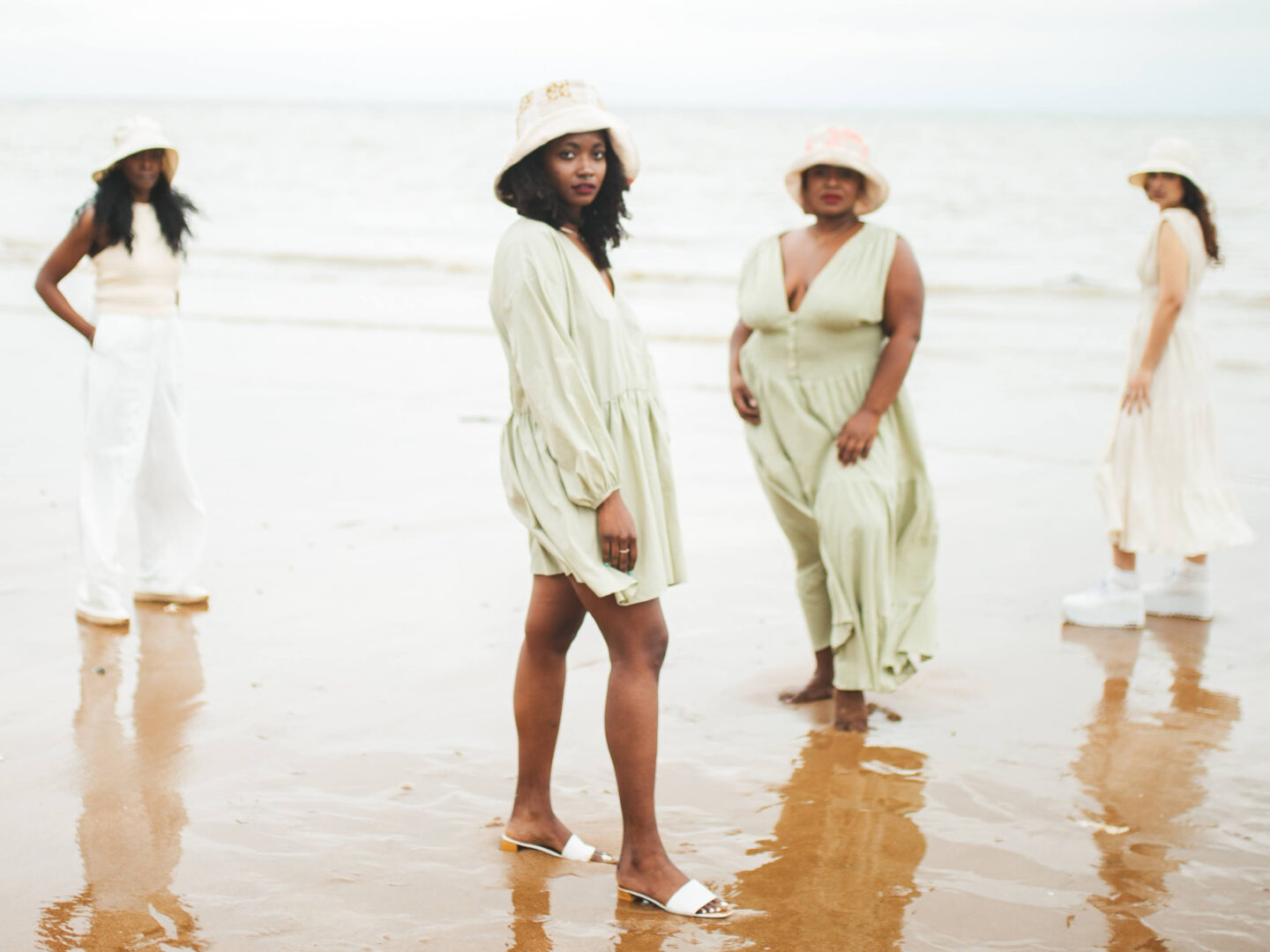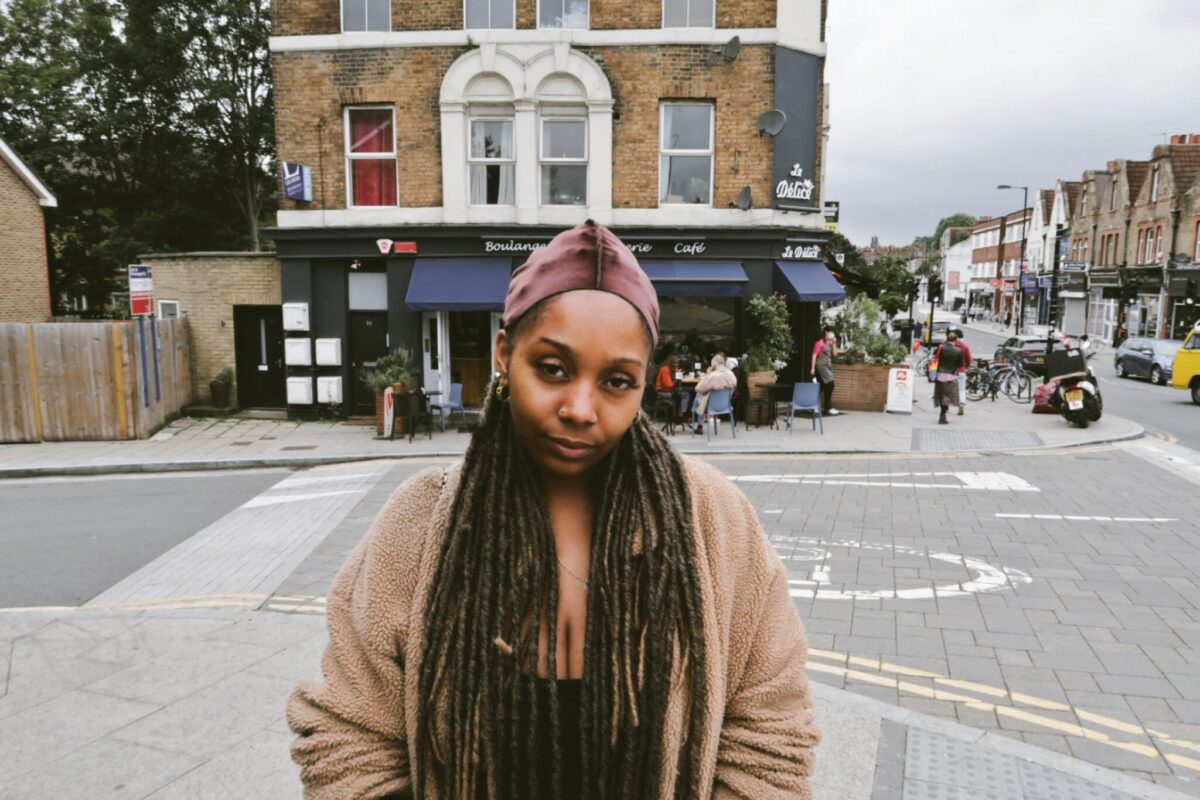Yelsha is the 25 year old designer and founder of YE London Studios. A new brand that is making waves in the headwear game. She takes inspiration from her community and the people around her to create designs that celebrate and embrace Black culture.
Yelsha always knew she wanted to start her own business but she wasn’t sure where to start. Whilst working at SuperDry she took inspiration from a colleague who was a Durag connoisseur but felt that there was something missing from his current collection. Her younger siblings were avid wearers of durags as well but during the night they were always falling off their heads. After purchasing a regular durag from a local beauty store, Yelsha realised that it had a really small head size considering how much hair Black people have. At that moment, she decided that it didn’t make sense for something to be made for Black people that wasn’t made by Black people.
She worked closely with her colleague and siblings to find the perfect sizes and lengths, until she found one that was unique to YE London. This quickly spiralled and the collection was launched with 12 colours that complemented and celebrated beautiful melanated skin and the culture of durags. A month later she launched the Mini YE collection, durags for younger children. She wanted to encourage people to wear their Durags proudly and incorporate them into their everyday outfits.
Your Instagram tagline says “more than just clothes, something for the generations”, could you elaborate more on that?
“My third year university collection was based on my grandma. My grandparents came over here during Windrush from Barbados to the UK. Growing up, my mom had a lot of fashion inspiration for my gran. I took inspiration from the androgynous business style that my mum had developed while she was growing up. All the fabrics in the collection were made from hessian, to pay homage to my gran when she was growing up in poorer times in Barbados and her mother would make her dresses out of potato sacks. The hessian fabric was quite similar to the potato sack fabric, and so I made all the suits out of it.
“So the brand, it’s not really a brand for me, it’s a brand for my family. It’s a brand to respect my gran and what she’s done for my family. To respect my mum and what she’s done for me and our family. That’s what Ye London is. It’s not just clothes, it’s not just me bringing out a collection so that people can see my name. It’s so that everyone can see themselves in a collection because it’s a family’s collection.
“I want children to be able to wear my collection. I want older people to be able to wear my collection. I don’t want there to be any limitations of gender, age, ethnicity – except for the durags because I’m not trying to encourage culture appropriation, but other than that, that’s literally what the slogan means”
Who are some of your inspirations?
“I’ve been inspired by a lot of people, I’m very fluid and everyone is an inspiration to me. I haven’t really got one set muse, other than the people around me. So if I can see myself in you, you’re my inspiration.”
What’s it been like setting up a business during the pandemic?

“It’s been a breeze in that I’ve had the comfort of my job because I work full time, and I worked in retail so I was furloughed. I was getting paid, which meant I could focus on designing. I even redecorated my room because my mum always said ‘the state of your room is the state of your mind’ and I couldn’t really function and really do what I had to do without doing that. I had everything I needed around me. I had the sleep that I haven’t been able to have for years. All of that really enabled me to work.
“The hardest part was sampling. I couldn’t get the fabrics I needed, I couldn’t see people in-person to actually sample the things that I was making. I had to send it out to them. Which held me back quite a lot because I couldn’t get to the fabrics that I needed, I had to source more expensive ones. I had to wait until the last moment until I could get the cheaper fabrics. Photoshoots were hard to arrange. It was like I’ve got the product, but I haven’t got the pictures to show that I do. Even now I still feel a little behind, the photoshoot we did recently, for example, should have happened ages ago but the pandemic keeps kicking my butt. So I’m like, I need to be more creative and work around it. Other than that, I’ve been pretty blessed throughout this time.”
You’ve just launched a new line of bucket hats, tell us more about that
“The bucket hats are my baby. I just love hats. I didn’t know I loved hats so much until I started wearing them more and making them.
“The inspiration behind this expansion comes from my cousin’s friend who has a head full of locs but struggled to find hats that fit him. He has a big head, a really big head. So I started working with him, sampling to find and make the perfect bucket hat. Once we got the size down, I started adjusting the brim – because there’s nothing worse than wearing a hat that’s too tight and having a line across your forehead when you remove it.
“I also hate sometimes that you have a really beautiful hat that you pay so much money for but the lining is white and your makeup rubs off on there. What are you supposed to do now with your dry clean only hat that has permanent makeup stains on the inside?
“It’s simple things like that that I thought could be adjusted in the making stage, which would allow you to appreciate it and wear it a little bit longer. That’s why there’s a brown satin ‘sweat band’, so your makeup won’t stain the fabric and the rest of the hat is lined with organza to keep it light-weight and breathable.
“I try to be as sustainable and eco-friendly as possible, so I make sure that I’m sourcing 100% linen, eco washed and eco dyed for the coloured versions. I focus on pattern cutting so that I utilise the whole fabric as much as I can and minimise waste. The limited edition hats will feature reworked kimono silk from Japan. Those little pieces will be on the hat because I love using off-cuts and remnant fabrics that are so small you can’t really use them for much but on a bucket hat they’re perfect to create the patchwork style.”
Do you have any advice for anyone who wants to start their own business?
“If you’ve been sitting on an idea for a long time, it’s an idea that is worth exploring! YE London has been in the works for four years in my brain and it took a pandemic for me to actually kick it into gear.
“Make sure you do your research, know who your market is, know who your competition is and don’t try to rush to put something out there. You don’t want to have to keep going back and rework things.
“There’s always a gap in the market and I discovered a gap that works for me. So, even if there are hats out there that are accommodating for bigger heads or if there are durags out there that already have different colours and are slightly longer. No one is me. There will always be someone else out there that has a similar or the same ideas as you but as long as you have faith in what you’re putting out there and who you are, that’s all that matters.”
You can shop the new bucket hat collection at Ye London Studios
Follow them on Instagram and Twitter
Interviewed by Toni Murphy

